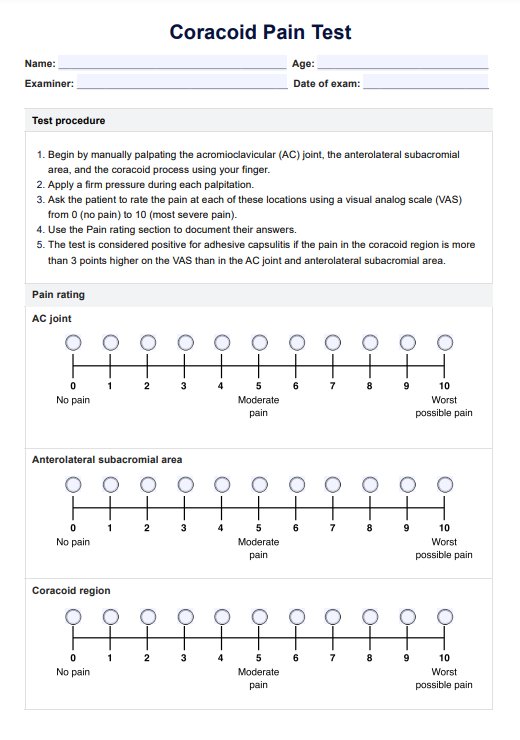A Coracoid Pain Test is used to diagnose frozen shoulder syndrome, also known as adhesive capsulitis. This test helps determine if the pain is caused by inflammation in the coracoid process of the scapula (shoulder blade), which can be a contributing factor to frozen shoulder syndrome.

Coracoid Pain Test
Learn about the Coracoid Pain Test for diagnosing adhesive capsulitis (frozen shoulder), including its procedure, interpretation, and management.
Coracoid Pain Test Template
Commonly asked questions
Coracoid process pain is typically felt near the front of the shoulder, just below the collarbone. This area is often sensitive to touch and can cause a deep, aching pain that may radiate down the arm.
There are several ways to fix a coracoid impingement, depending on the severity of the condition. These may include physical therapy exercises to strengthen the surrounding muscles and improve range of motion, anti-inflammatory medication or corticosteroid injections to reduce pain and inflammation, and in more severe cases, surgery to remove any bony growths or repair damaged tissues.
EHR and practice management software
Get started for free
*No credit card required
Free
$0/usd
Unlimited clients
Telehealth
1GB of storage
Client portal text
Automated billing and online payments











